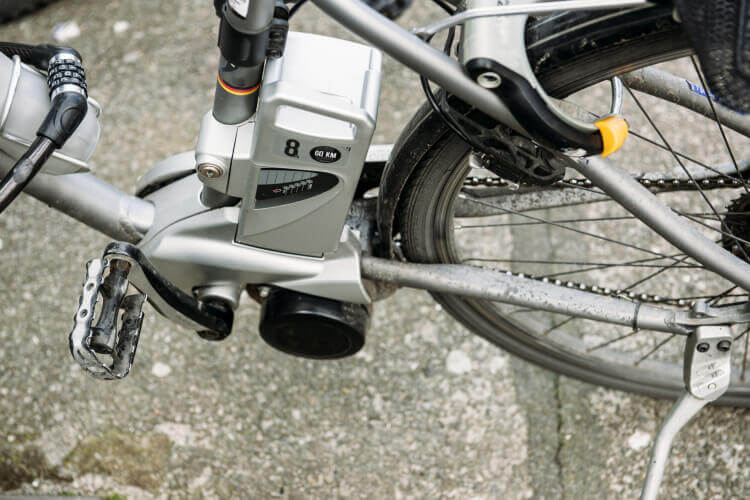
The question of how long do batteries last in electric bikes is often a lingering one. The lithium-ion batteries are more durable than the other types, but recharging them more frequently is a sign that they are nearing the end of their lifespan. Here’s a look at some of the things to watch out for. These include: Increasingly frequent recharging, the need to recharge the battery, and a general deterioration in the quality of the battery.
Lithium-ion batteries last longer
Electric bikes with Lithium-ion batteries have excellent performance. With proper care, batteries can last for years. While there are some tips to help a battery last longer, you must also understand the cycle life of your electric bike. Proper care can increase battery life by hundreds of percent. Moreover, proper cycling mode reduces strain on the battery and motor. By avoiding full throttle mode, you can increase battery life.
The battery is made up of many smaller cells arranged in series and parallel. The number of cells varies from 40 to fifty, depending on the manufacturer. The ideal charging conditions include slow, cool temperatures. Manufacturers typically recommend charging electric bikes batteries between 41 and 113 degrees Fahrenheit. In addition, lithium-ion batteries are capable of being charged at lower temperatures. If left for extended periods of time, they can cause the batteries to lose capacity and even catch fire.
While cycling, lithium-ion batteries should not be left unused overnight. Lithium-ion batteries last longer if they are charged to 80 to ninety percent of their capacity. This charge allows the battery to recharge when necessary, preventing deep discharge. It is also important not to fully discharge the battery before riding. The temperature of the lithium battery will increase and accelerate degradation. So, if you want to make your battery last as long as possible, recharge it properly and take care of it!
As with any battery, lithium-ion batteries require proper storage. Lithium-ion batteries tend to lose up to three percent of their charge after each month of storage. Lithium batteries should be stored at temperatures between 32 and 77 degrees Fahrenheit. Extreme temperatures will damage the battery’s lithium powder and cause it to lose its electrical resistance. In addition to reducing battery life, high temperatures can lead to a fire.
When you store your e-bike battery, it is vital to prevent deep discharges. The lithium-ion batteries should be kept between forty and seventy percent of their full charge capacity, thereby extending their lifespan. The lithium-ion battery packs should also be recharged every ninety days, to ensure they remain fully charged. It is also important to charge them at room temperature whenever possible.
In addition to reading the manuals, you should also learn how to properly charge and maintain your battery. Proper care of lithium-ion batteries extends their life and keeps them in perfect condition. They can last three to five years. In case of overcharging, the battery voltage will drop significantly to an irreversible point, which will damage your electric bike’s battery. You may also want to purchase a lithium-ion charger that has a lower storage voltage setting to prevent overcharging and premature failure.
Another benefit of lithium-ion batteries is that they can be recycled and reused. This is especially beneficial for people who ride electric bikes a lot. Compared to other types of batteries, lithium-ion batteries last longer in electric bikes. They can also be reused for various other purposes. This way, you can get more mileage from your electric bike. If you don’t want to worry about battery life, simply upgrade to a larger one.
Recharging your battery more often is a sign of ageing
Recharging your battery more often is symptomatic of an ageing electric bike. Lithium-ion batteries are best recharged between 30 and 40 percent of their full capacity. High or low temperatures can damage batteries and cause them to age prematurely. If you want to maximize the life of your battery, follow the 30%-60% rule. After 30-40 charges, your battery should be at 80 to 90% capacity. Keep your electric bike battery out of extreme temperatures.
Signs that your battery’s life is coming to an end
If you have an electric bike and are wondering when the battery will need to be replaced, there are several signs that can tell you when your battery has run out. While a fully charged battery has the best performance, as it will allow you to ride longer, you should replace it when it begins to lose power. Other signs include voltage fluctuations and a lack of power. In either case, it’s time to replace the battery.
It’s also important to remember that e-bike batteries reach optimum health when the charge level is above 30%. Your display monitor will tell you this, but don’t ride with a low battery level. This puts unnecessary strain on the battery and accelerates its natural decomposition process. When it’s below 30%, it is time to recharge your e-bike, or face the risk of riding without assistance.
Luckily, many e-bike batteries show early warning signs. A reduced range and inconsistent performance are two obvious signs that your battery is nearing the end of its life. If you’ve noticed any of these signs, it’s time to contact a bike shop or call the manufacturer for a replacement. Depending on the model of your electric bike, a new battery will need to be customized to your bike. To ensure that your e-bike battery is of the highest quality, you should refer to its manual for installation and maintenance.
Another common symptom that your battery is about to run out of power is the inability to charge. If the battery doesn’t charge, the bike will stop running. Other electricals on the bike will also stop working. A dead battery needs to be replaced if you want to ride again. You can check whether the battery is dying by checking the voltage on your bike’s display screen or with a voltmeter.
You’ll also want to be aware of battery fires. A fire on a dockless Lime e-bike in Yonkers recently ignited an apartment. A fire at a Lime warehouse damaged a bike’s battery. This happened in mid-August. Another incident occurred in mid-August, when a battery in an electric bike caught fire. Several fires have occurred at Citi Bike facilities. One of the largest e-bike retailers suffered $350,000 in damage due to a fire that damaged the charger.

